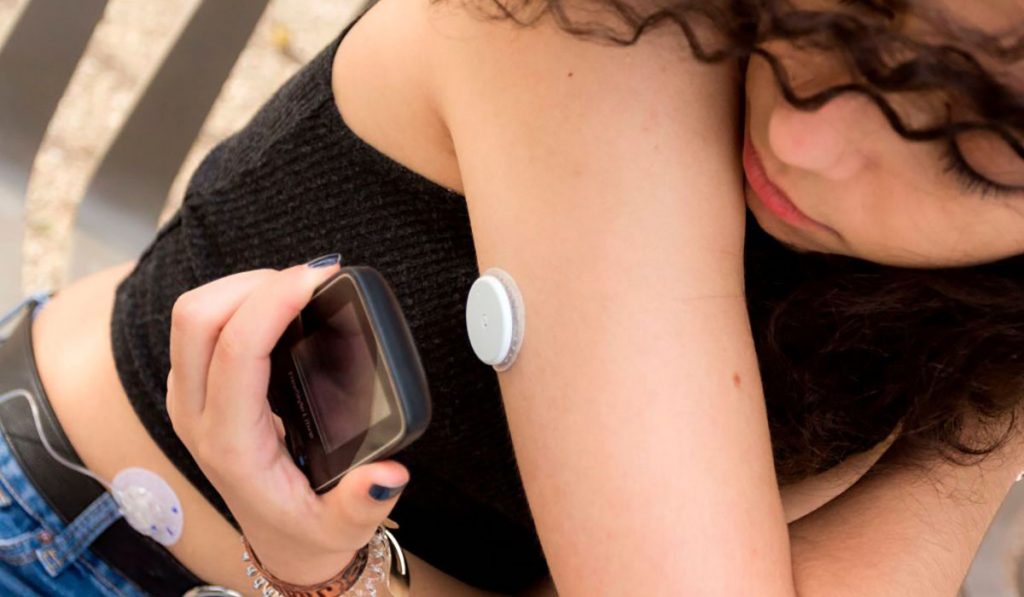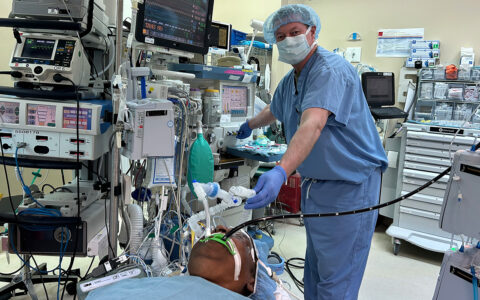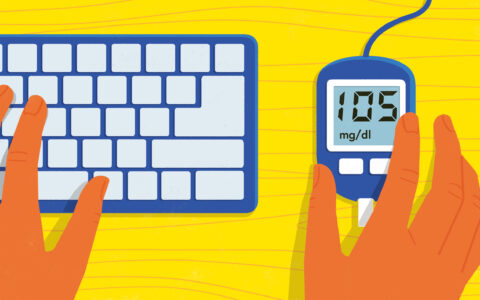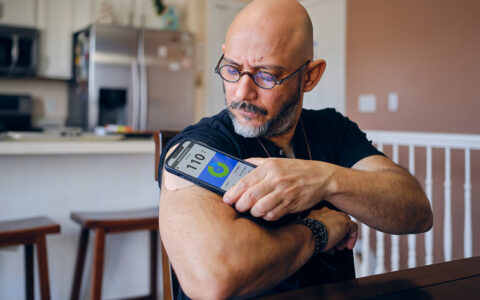One third of Americans are thought to have prediabetes or diabetes, driving development of new treatment regimens and technologies to manage blood glucose. The American Diabetes Association (ADA) recently released their 2019 Standards of Medical Care in Diabetes that provides guidance on using the latest tech and providing inpatient diabetes care, among nearly 200 pages of recommendations.
“These are two of the more important changes in the new guidelines likely to impact patient care,” said Michael Fowler, M.D., associate professor of medicine in the Vanderbilt Eskind Diabetes Clinic. As director of diabetes outreach, Fowler helps connect new patients to the breadth of tailored care options available.
New Tech Offers Real-Time Data
Diabetes tech is no longer split between insulin administration devices and glucose monitoring systems. New hardware, devices and software handle both, helping patients self-manage diabetes mellitus (DM) and more closely monitor their condition.
With the explosion of new options, the ADA added an entire Diabetes Technology section to their guidelines in 2019. One focus is on continuous glucose monitors (CGMs), small, thin filaments inserted under the skin to measure glucose levels in interstitial fluid. They can monitor glucose levels on demand or intermittently, and send results directly to an insulin pump or computer.
The ADA now says intermittently scanned CGMs may be used as a substitute for self-monitoring of blood glucose in adults. This significantly reduces the need for fingerstick blood measurements. Several models have been approved for use without blood testing to calibrate them, while others only require intermittent blood samples for calibration.
Applying Tech to Patient Care
“This technology may be especially useful in children and adolescents, as blood sugar data can be transmitted to a parent’s smartphone,” Fowler said. CGMs also offer a granular look at real-time glucose levels for providers looking to finetune treatment regimens.
Fowler has found adults with type 2 diabetes respond favorably to CGM devices. “These devices are small, discreet and water-resistant. They may even be covered by Medicare,” Fowler said. With proper education, CGMs have been shown to improve self-management.
“We have a diabetes technology program that focuses on assisting patients in using cutting-edge technology like CGM,” Fowler said. The program, led by Shichun Bao, M.D., an associate professor of medicine at Vanderbilt, helps connect patients with the latest insulin pumps, CGMs and other diabetes-related technology.
Navigating Inpatient Diabetes Care
Inpatient diabetes management is also a focus of the new guidelines—as hyperglycemia is associated with poor outcomes, and readmission rates for patients with diabetes are between 14 and 20 percent.
People with diabetes represent a sizeable proportion of hospitalized patients, but not all arrive with a type 1 or 2 DM diagnosis. Said Fowler, “Part of the challenge is figuring out what you’re dealing with. Patients may be hospitalized with hyperglycemia, known DM, undiagnosed DM, or acute illness-induced hyperglycemia.”
The ADA now recommends performing a hemoglobin A1c on all hyperglycemic patients, or patients with known DM (if not done within the past three months). A glucose level in the hospital over 140 mg/dL is considered hyperglycemia, and admission A1c over 6.4 percent suggests diabetes preceded hospitalization.
Challenges Spur New Consult Services
Acute care providers should also consult with a specialized diabetes or glucose management team when DM is suspected, according to the new guidelines. Specialists can advise personalized glycemic control options and could help lower care costs. At Vanderbilt, a recently established Glucose Management Service integrates nurse practitioners into acute care settings—particularly at discharge to develop outpatient care plans—to lower rates of uncontrolled diabetes in the hospital.
“Starting this year, we increased the number of providers on the Glucose Management Service from three to seven,” Fowler said. “We also have reserved daily outpatient appointment slots for hospital follow up patients.”
A comprehensive approach is likely to have the largest impact on preventing acute DM complications, Fowler said. Specialty consults can provide both inpatient and outpatient assistance in educating patients on management and new technology, and developing care plans that improve quality of life for patients with DM.




